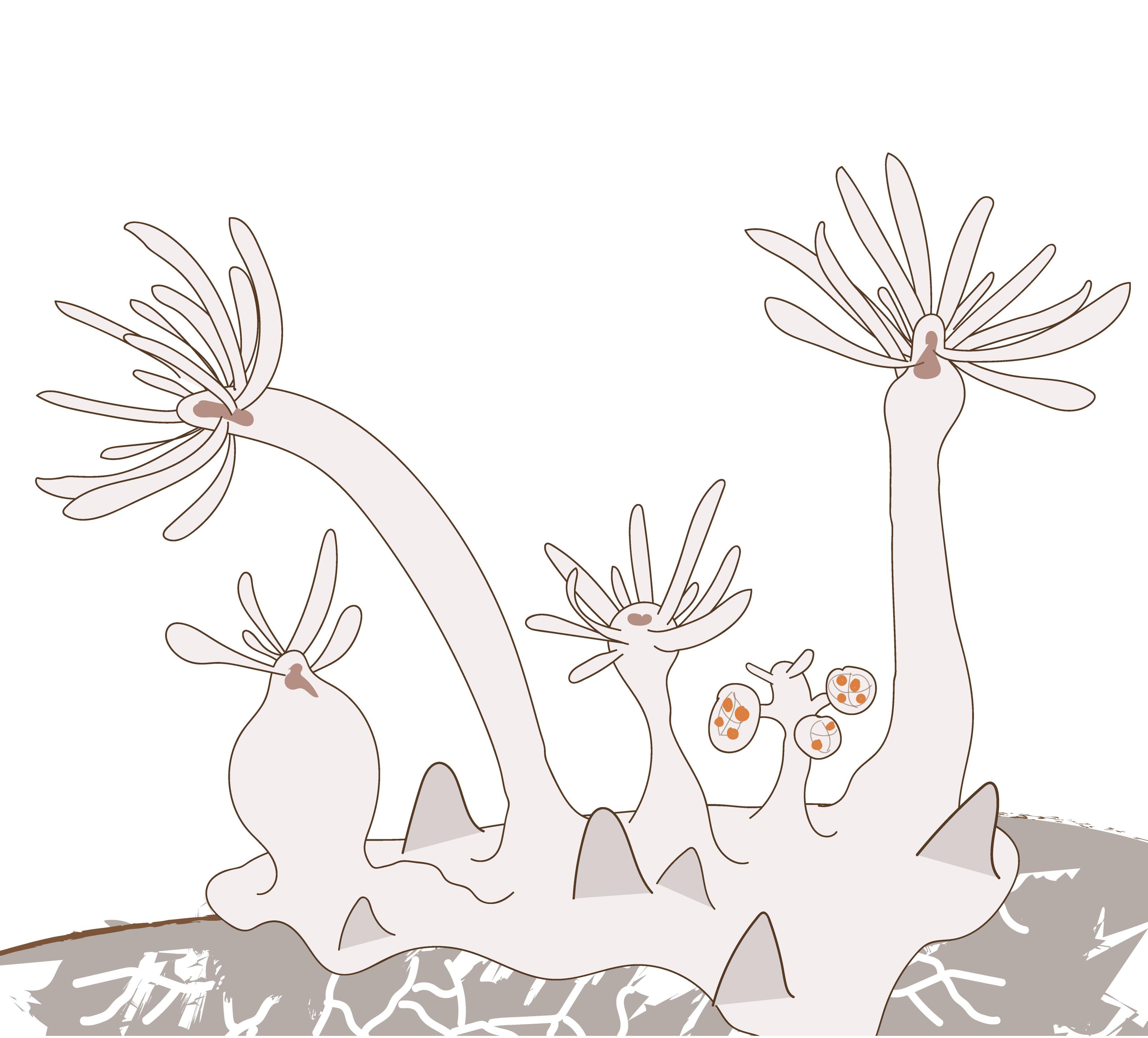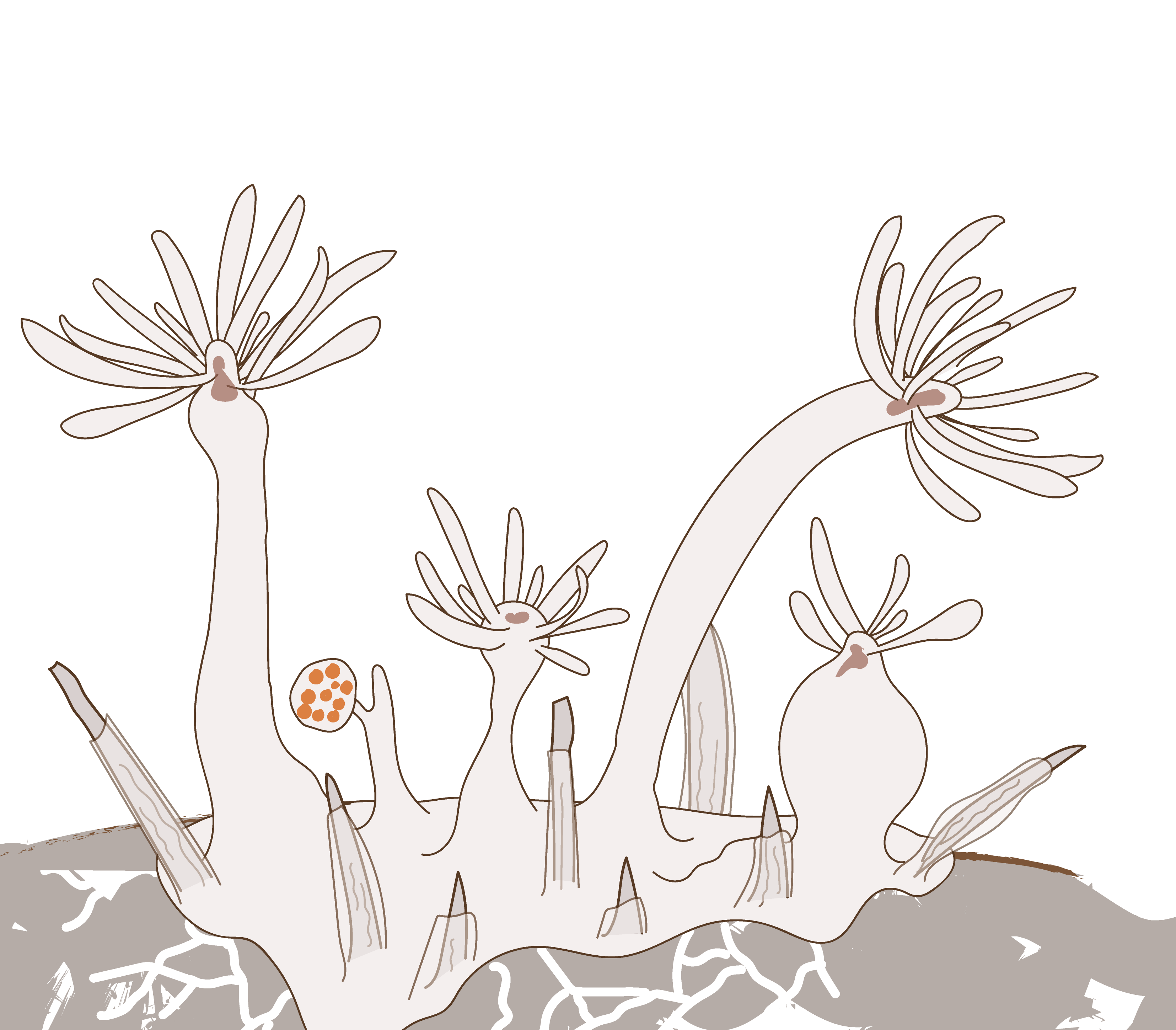Schuchertinia allmanii
Schuchertinia allmanii is the only species of hydractiniid in Norway that reproduces through medusoids. The colonies grow on marine snails, preferably those in genus Colus, living in deep oceanic waters.
Identification
The colonies of S. allmanii have feeding polyps (gastrozooids) and reproductive polyps (gonozooids) with different characteristics. The gastrozooids are quite large compared with other members of Hydractiniidae; they can reach 15 mm high and have 10–16 tentacles in one whorl. The gonozooids are much smaller than the gastrozooids (about 5–7 mm). Each gonozooid has 0–6 short tentacles. When they are present, the spines are often small and smooth. The gonophores are medusoids, they have radial canals and rudiments of tentacles but do not have a mouth and are presumably not released from the colony.
Morphological details of Schuchertinia allmanii. Left: Gastrozooid (left) and gonozooid with medusoid (right) from a museum-preserved colony. Middle: hydrorhiza growing on the mollusc shell. Right: The mollusc Colus sp. with a living colony of S. allmanii.
Look-alikes
The presence of medusoids renders this species unmistakable. Young non-reproductive colonies could be confused with any of the Arctic hydractiniid species that grow preferably on living snails (for example Hydractinia carica, Hydractinia monocarpa, and Clavactinia serrata), but the larger size of the gastrozooids of S. allmanii (they are more than 5 times longer than those of H. carica, H. monocarpa, and C. serrata) could help in identification.
Biology, ecology and behavior
The colonies of this species grow preferably on snail shells of the genus Colus inhabited by the snail and not by hermit crabs. Schuchertinia allmanii has been recorded up to a depth of 1500 m.
Distribution
Schuchertinia allmanii is a mostly Arctic species, although there are confirmed records of this species in deep waters around the Faroe Islands. Most of the occurrences have been reported from deep waters off northern Norway, eastern Greenland, Spitsbergen, Iceland, the Arctic seas north of Russia, and the Sea of Okhotsk.
References
Schuchert P (2008). The European athecate hydroids and their medusae (Hydrozoa, Cnidaria): Filifera Part 3. Revue suisse de Zoologie 115(2):221–302.



